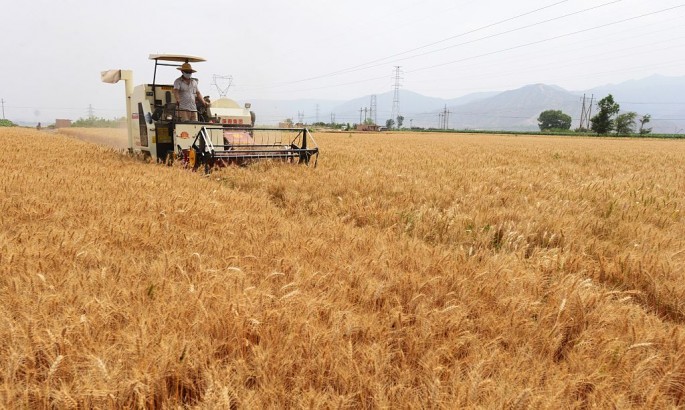China is set to undertake reforms in its agriculture industry to address the growing food security crisis, which is seen as the biggest change since the Great Leap Forward.
The changes are being planned as China is faced with problems on how to feed the nation of 1.3 billion, almost a fifth of the world population with only 7 percent of arable land.
An article by Time said that fertilizer overuse, intensive animal grazing and the use of biomass for rural energy have caused severe soil degradation to more than 40 percent of the country's land.
According to experts, it was agriculture, not the industrial factories, that has exerted a great toll on China's environment.
This has resulted in poverty and land degradation as it was predicted that some 300 million Chinese are expected to leave the fields or farms for jobs in the city, despite the fact that the country has produced 600 million tons of food for 12 straight years.
In addition, valuable agriculture lands have been lost to give way to urban clusters, where meat, grain and dairy consumption is higher.
About 63 kilograms of meat is consumed by the average Chinese every year, which is expected to increase by 30 kg by 2030, while 70 percent of the country's corn has been used to feed livestock, not the people, the report said.
To address the problem and safeguard food security, the Chinese Communist Party (CCP) has taken drastic actions such as the acquisition of land overseas that included the largest dairy in Australia, more than 324,000 hectares of farmland in Argentina, and soybean-processing plants in Brazil that are worth billions of dollars.
The government has also re-introduced taxes on fertilizers and pesticides and reorganized incentives and subsidies for farmers. It also reduced support for unprofitable crops and increased subsidies for crops that are in demand and sustainable.
An expert said that the CCP took serious risks with the reforms which if they fail, could make food prices soar and impoverished the farmers further.
"There could be massive social unrest if they screw up the agriculture industry," Erlend Ek, an agriculture expert at the China Policy research firm, was quoted as saying. "There hasn't been this big of a change maybe since the Great Leap Forward."
The country's tillable land is divided into small parcels owned by farmers and some state-run farms.
The government wants to organize these small farms into larger farms to modernize agriculture.
"Chinese agriculture is effectively a cottage industry," Sun Chang, chairman of Black Soil group, which helps to consolidate these plots into larger farms, said. "China is so far behind the U.S., Australia or Europe because of unorganized, subscale farms with no scientific management."
As staple crops are expensive to grow in China compared with the U.S., the government has turned to alternative solutions to remain self-sufficient.
In Gansu Province, farmers cultivate alfalfa as substitute to traditional crops while in Guandong Province, insects are being grown to become a source of high-protein animal feed.
To replace toxic insecticides, Chinese scientists breed wasps called Trichogramma, that feed on the eggs of destructive pests. Pigs in Jilin Province are grown in a bed of microbe-infused rice husk and sawmill, to reduce the smell of excrement to be used as compost for the fields. Most incredibly, salmon and trout are being farmed in the arid Gobi Desert.
Rustan Lindqvist, a Swede who spent 25 years working in aquaculture across Scandinavia, helped China to establish a recirculation aquaculture system (RAS) farm in Xinjiang Province, where fish are grown in large indoor tanks under controlled conditions.
"I thought someone finally understands the full potential of the RAS system," Lindqvist, the architect of the project, said. "You can actually build it in the middle of the desert."
China has transformed the Turpan basin, the country's hottest and driest region, into a green pasture through network of deep karez wells that stretches to more than 5,000 km. The government has also reforested the Yellow River Loess Plateau, through the watershed rehabilitation project funded by World Bank.
Scientists, in partnership with the local communities, put a stop to free-grazing practices as animals were grown in pens. They also formed reservoirs and made terraced farming for crops in shallow slopes.
Local farmers were given ownership rights to the land to ensure continued maintenance of the land.
"This is transformation and change on a landscape about the size of France," Juergen Voegele, World Bank's former team leader for the project, said.
The strategy was replicated across the country which increased the number of high-quality farmland in China. There are now 30.4 million hectares of prime fields and the government aims to increase the number from 53 million to 67 million hectares by 2020, which is about half of all arable land in the country.
The government is also drafting a rural-land contract law, which will allow farmers to lease their land to a larger, consolidated farm. In Heilongjiang Province, the Black Soil group has two pilot projects which measures more than 750 sq km, with plans to expand it.
"Farmers are essentially turned into workers," Sun said. "They don't have to worry about working capital, standards, seeds, chemicals, buying equipment, sales. Only by doing this can you ensure food safety."



























